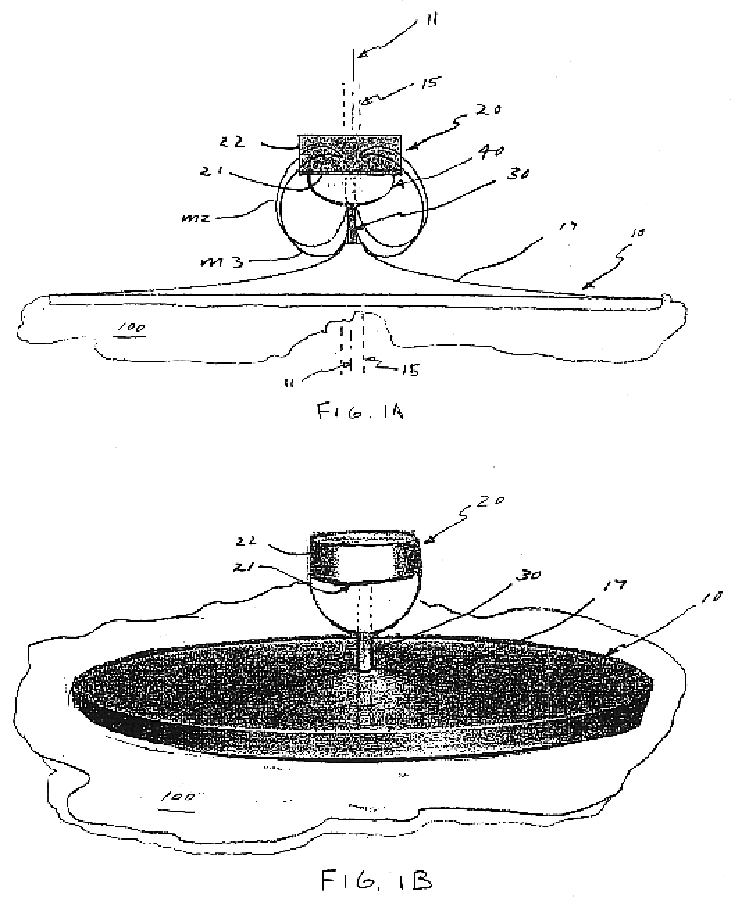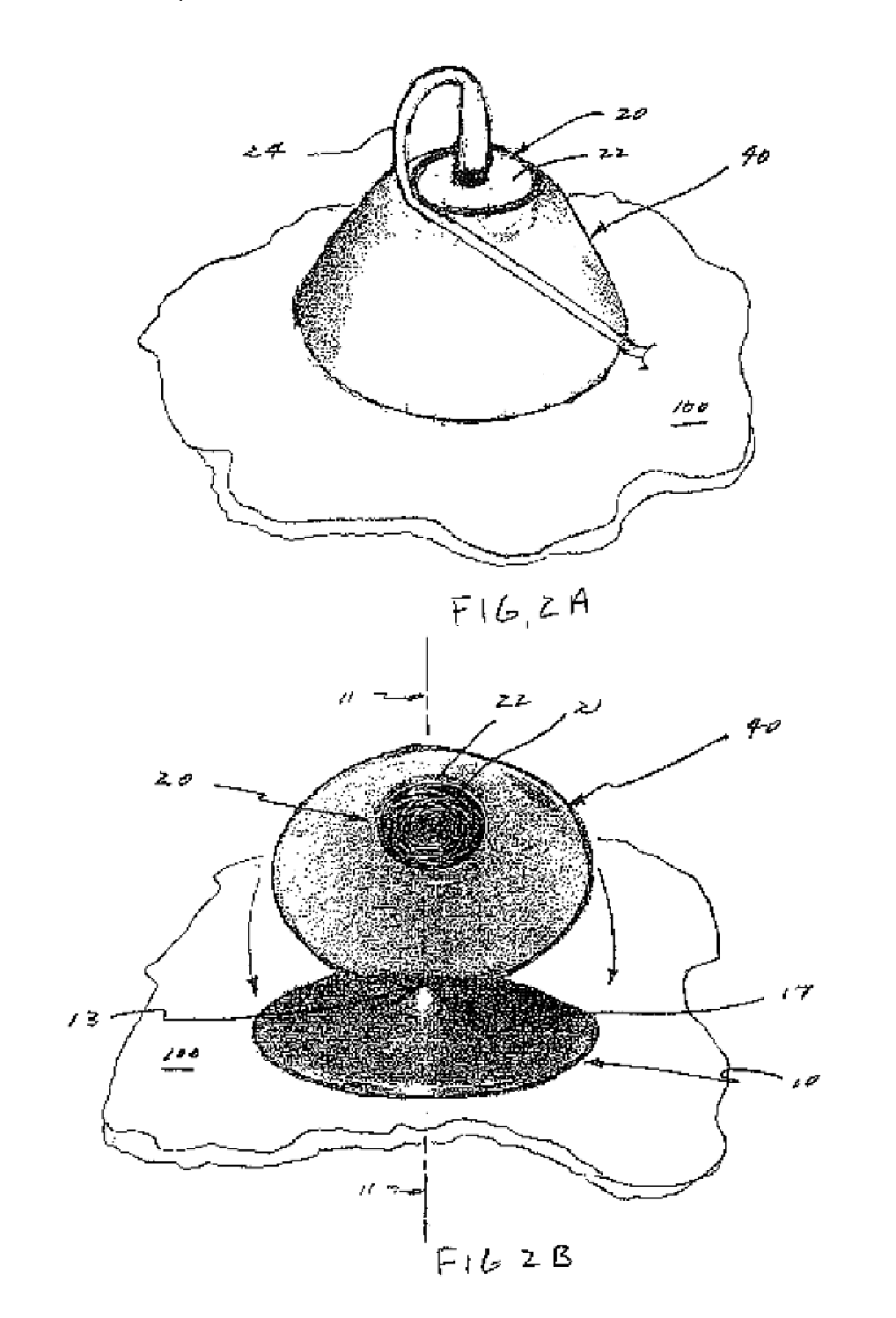Wide angle paraconic reflector antenna
a wide angle, paraconic technology, applied in the direction of non-resonant long antennas, antennas, electrically long antennas, etc., can solve the problems of compromising pattern coverage, limiting the size and weight of spaceborne antenna platforms, and raising attendant concerns, so as to achieve high gain and reduce size and weight
- Summary
- Abstract
- Description
- Claims
- Application Information
AI Technical Summary
Benefits of technology
Problems solved by technology
Method used
Image
Examples
Embodiment Construction
In the embodiment of FIGS. 1A and 1B a paraconic reflector antenna comprises a reflector 10 and a feed 20 supportably disposed in opposing relation to the reflector 10 by post 30. The reflector 10 and post 30 may be mounted on a support structure 100, such as the deck of a spaceborne vehicle (e.g. a satellite). In operation, radiation beams are transmitted by feed 20 and reflected by reflector 10 to yield wide-angle, annular coverage.
The post 30 may be located on the longitudinal center axis 11. In this regard, the post 30 may be positioned in a center hole provided through reflector 10.
The reflector 10 includes a curved reflecting surface 17 that is defined by a curve symmetrically rotated about a longitudinal center axis 11. As shown by FIG. 1, the curved reflecting surface 17 may generally define a truncated cone having dish-shaped sides in a side view. The curve used to define the curved reflecting surface 17 may be selected to have a focal point on or laterally displaced from t...
PUM
 Login to View More
Login to View More Abstract
Description
Claims
Application Information
 Login to View More
Login to View More - R&D
- Intellectual Property
- Life Sciences
- Materials
- Tech Scout
- Unparalleled Data Quality
- Higher Quality Content
- 60% Fewer Hallucinations
Browse by: Latest US Patents, China's latest patents, Technical Efficacy Thesaurus, Application Domain, Technology Topic, Popular Technical Reports.
© 2025 PatSnap. All rights reserved.Legal|Privacy policy|Modern Slavery Act Transparency Statement|Sitemap|About US| Contact US: help@patsnap.com



